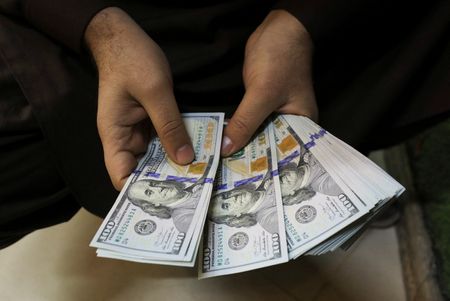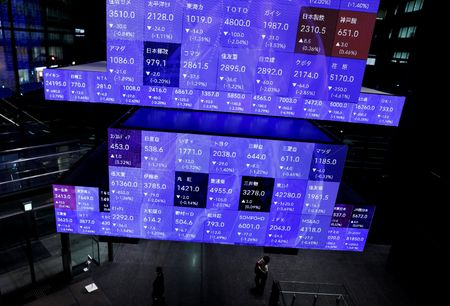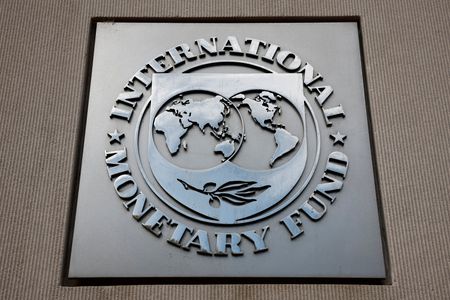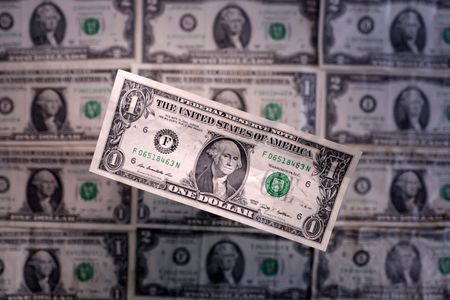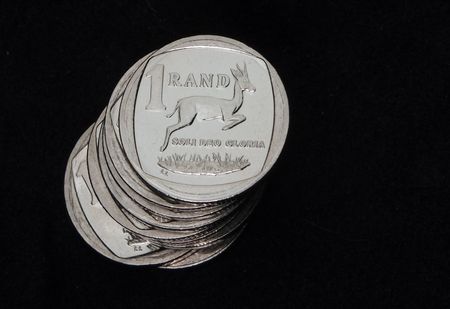By Chibuike Oguh and Stefano Rebaudo
NEW YORK (Reuters) -The dollar advanced against major peers on Wednesday following better-than-expected U.S. GDP data and as investors awaited the outcome of the Federal Reserve’s policy meeting later in the session.
U.S. economic growth rebounded more than expected in the second quarter, expanding by 3% compared with an estimate of 2.4% based on a Reuters poll of economists.
The Fed is widely expected to leave interest rates unchanged, rebuffing persistent calls by President Donald Trump to cut interest rates.
The euro extended losses against the dollar following the U.S. GDP data. It was down 0.65% to $1.1471, on track for the fifth straight session of losses and trading at its lowest level since June 23.
The euro is also poised to record its first monthly drop in 2025, following a sharp reaction to a U.S.-European Union trade deal earlier this week.
The dollar index added to its gains after the GDP report. It was up 0.56% at 99.442, hitting its highest since May 20 and on course to post its first month of gains this year.
U.S. Treasury yields were mostly higher ahead of news from the Fed. The 2-year note yield, which typically moves in step with interest rate expectations for the Fed, rose 2.7 basis points to 3.902%.
“I think people are reading too much into the GDP numbers; nobody in markets should think GDP was that weak in Q1 and that strong in Q2 even though the big drivers were inventories and net exports,” said Steve Englander, head of global G10 FX Research at Standard Chartered in New York.
“I will add the two quarters together and they averaged about 1.5% GDP growth per quarter, which is not a recession but qualifies as mediocre.”
Trade agreements struck with Japan last week and the EU over the weekend signalled a renewed U.S. commitment to global engagement, easing investor concerns.
Investors’ focus is now on negotiations between China and the U.S. after officials agreed to seek an extension of their 90-day tariff truce. But Trump upped the ante against India on Wednesday, announcing that a 25% tariff on imports starting August 1.
“Trump can afford to be harsh on India because he’s gotten a bunch of deals already and he’s trying to pressure them to be more forthcoming. . . I don’t think the tariffs will end as harsh as he hinted but he does want to negotiate with India on terms favorable to the US,” Englander said.
Data showed on Wednesday that the German economy contracted in the second quarter, while France’s economy beat forecasts.
The spotlight will be on comments from BoJ Governor Kazuo Ueda as investors hope the trade deal between Japan and the U.S. paves the way for the central bank to raise rates on Thursday.
The dollar was firmer 0.28% to 148.88 against the yen, hitting a two-week high. Against the Swiss franc, the dollar strengthened 0.65% to 0.811 francs, reaching its highest since June 24.
(Reporting by Chibuike Oguh in New York and Stefano Rebaudo; Editing by Kate Mayberry, Bernadette Baum, Ros Russell and Frances Kerry)

